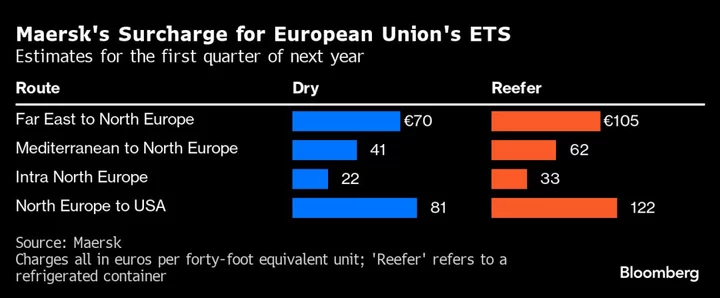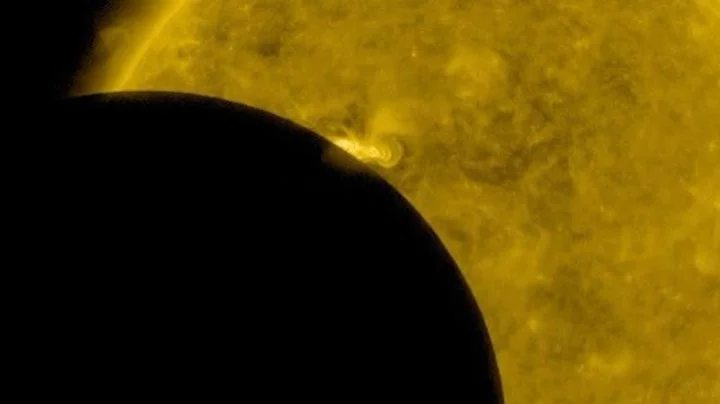
ESG Targets of Europe’s 20 Biggest Banks Slammed in New Report
The green finance targets of European banks are falling well short of what is needed, according to a
2023-11-22 10:45

Fortnite Chapter 5 Features Lady Gaga and Linkin Park in Rhythm Mode
Lady Gaga, Linkin Park, Imagine Dragons, and more are coming to Fortnite Chapter 5 in new Rock Band-inspired Rhythm mode.
2023-11-22 01:21

Fortnite Eminem Skin Leaked for Fortnite Chapter 4 Live Event
A leaked Fortnite Eminem skin confirmed Slim Shady is coming to the Fortnite Chapter 4 live event, The Big Bang, to perform a possible concert.
2023-11-22 01:20

Blackstone and Permira to buy Adevinta for about $13 billion
Permira and Blackstone on Tuesday said that they willacquire eBay-backed online classifieds group Adevinta ASA for about 141
2023-11-22 00:53

Chipmaker Analog Devices' forecasts held back by inventory corrections
(Reuters) -Analog Devices projected first-quarter revenue and profit below market estimates on Tuesday as the chipmaker grapples with an ongoing
2023-11-22 00:49

Earth has just received a message from 10 million miles away
An experiment to see if a laser could beam a message through space to Earth has been successful and could alter the future of spacecraft communication. The experiment was made possible by the Deep Space Optical Communications (DSOC) tool which was travelling onboard NASA’s Psyche spacecraft. It was successfully able to beam a message to Earth, via a near-infrared laser, from far beyond the Moon. It is the furthest such optical communication to have ever been communicated and was encoded with test data to ensure that it worked correctly. The DSOC successfully beamed the data from approximately 16 million kilometers (10 million miles) away to the Hale Telescope at Caltech’s Palomar Observatory in California. Hitching a ride on the Psyche spacecraft, the experiment achieved the so-called “first light” on 14 November, according to NASA's Jet Propulsion Laboratory which is managing the mission from Earth. NASA explained the demo’s “flight laser transceiver – a cutting-edge instrument aboard Psyche capable of sending and receiving near-infrared signals – locked onto a powerful uplink laser beacon transmitted from the Optical Communications Telescope Laboratory at JPL’s Table Mountain Facility near Wrightwood, California.” The uplink beacon assisted the transceiver in aiming its downlink to Caltech’s observatory, where the signal was received. Trudy Kortes, director of Technology Demonstrations at NASA HQ, said: “Achieving first light is one of many critical DSOC milestones in the coming months, paving the way toward higher-data-rate communications capable of sending scientific information, high-definition imagery, and streaming video in support of humanity’s next giant leap: sending humans to Mars.” It’s not the first time that optical communications have been used to beam messages from space, but these laser beams mark the furthest a message has ever been transmitted. With missions further than the moon, NASA typically uses radio waves to communicate. However, laser beams allow for a greater amount of data to be packed in them, potentially giving experts more options in future missions. Dr Jason Mitchell, director of the Advanced Communications and Navigation Technologies Division within NASA’s Space Communications and Navigation program, explained: “Optical communication is a boon for scientists and researchers who always want more from their space missions, and will enable human exploration of deep space.” How to join the indy100's free WhatsApp channel Sign up to our free indy100 weekly newsletter Have your say in our news democracy. Click the upvote icon at the top of the page to help raise this article through the indy100 rankings.
2023-11-21 23:26

BIS Sees Climate Losses Hitting Governments as Insurers Exit
As insurers start to pull out from markets battered by the fallout of climate change, governments are increasingly
2023-11-21 22:59

Broadcom plans to close $69 billion VMWare deal on Wednesday
Broadcom said it plans to close its $69 billion deal for cloud computing firm VMWare on Wednesday. Broadcom
2023-11-21 20:57

Global Shipping’s $3.6 Billion Carbon Bill Is Six Weeks Away
Ships sailing to European ports face a combined carbon emissions bill of $3.6 billion next year, the start
2023-11-21 20:49

Half-Life head Gabel Newell argues games don't have to be realistic
Gabe Newell is not interested in making games grounded in realism because there are never "fun".
2023-11-21 20:27

How to Tell If a Climate Deal Will Succeed or Fail
It’s about to get very noisy in the climate world as more than 70,000 people flock to the
2023-11-21 20:26

Chinese rocket that hurtled into the Moon was carrying a ‘secret object’
A mysterious object crashed into the Moon last year, and scientists think they’ve finally figured out what it was. On March 4, 2022, a piece of space junk hurtled towards the surface of our celestial companion, leaving behind not one but two craters – prompting speculation as to what exactly the manmade object was. And now, in a paper published in the Planetary Science Journal, a team of researchers at the University of Arizona (UArizona) have offered “definitive proof” that it was a booster from a Chinese space rocket that had spent several years hurtling through space. But the most interesting part of all this? The defunct piece of spacecraft was apparently carrying a secret cargo. Initially, based on its path through the sky, the UArizona team thought it was an errant SpaceX Falcon 9 rocket booster from a 2015 launch. However, after analysing how precise light signals bounced off its surface, they later concluded that it was more likely to be a booster from a Chang'e 5-T1 – a rocket launched back in 2014 as part of China’s lunar exploration programme. And yet, the Chinese space agency denied ownership, insisting that their rocket booster burned up in the Earth's atmosphere upon re-entry. But the US Space Command refuted this claim by revealing that the rocket’s third stage never re-entered the planet’s atmosphere. Furthermore, two key pieces of evidence gathered by the UArizona researchers suggested that there was more to the object than just a simple abandoned rocket booster. Firstly, the way it reflected light. The paper’s lead author, Tanner Campbell, explained in a statement: "Something that's been in space as long as this is subjected to forces from the Earth's and the moon's gravity and the light from the sun, so you would expect it to wobble a little bit, particularly when you consider that the rocket body is a big empty shell with a heavy engine on one side. “But this was just tumbling end-over-end, in a very stable way." In other words, the rocket booster must have had some kind of counterweight to its two engines, each of which would have weighed around 545kg (1,200lbs) without fuel. The stability with which the object rotated led Campbell and his colleagues to deduce that “there must have been something more mounted to [its] front”. Secondly, the team were struck by the impact the booster left when it slammed into the Moon. It created two craters, around 100ft (30.5 metres) apart, instead of one, which, according to Campbell was very unusual. He pointed out that the craters left behind by Apollo rockets are either round, if the object came straight down, or oblong if it crashed down at a shallow angle. "This is the first time we see a double crater," he said. "We know that in the case of Chang'e 5 T1, its impact was almost straight down, and to get those two craters of about the same size, you need two roughly equal masses that are apart from each other." And yet, despite the rigour of their investigation, the UArizona team have been unable to identify what exactly this additional object was. "We have no idea what it might have been – perhaps some extra support structure, or additional instrumentation, or something else," Campbell admitted. "We probably won't ever know." Sign up for our free Indy100 weekly newsletter Have your say in our news democracy. Click the upvote icon at the top of the page to help raise this article through the indy100 rankings
2023-11-21 20:25
